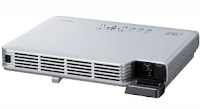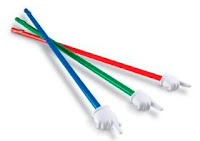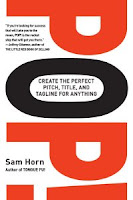I was reading an article the other day, one geared toward speakers. The author was describing how he had reinvigorated his business as the speaking market had changed along with the economy.
First, he described their solution:
"We listened to our customers and created a new platform of service deliverables to meet their needs and wants. We continue to produce revenue from speeches and seminars, royalties, products, contract training, coaching and consulting, but by adapting how we went to market, we developed some innovative ways to deliver our services to meet the changing needs of a different marketplace."
Huh.
And then he later described the results:
"Responding to the needs of a new marketplace, we were able to provide insights, experience and expertise in our new vertical content areas of entrepreneurship and negotiation, beyond our core competency of sales training."
Got it. "By initiating communication and learning platforms," they were able to "present some expanded solutions to satisfy their true needs."
The whole article is like this, with only one example mentioned about how they actually accomplished these changes. Otherwise, it's one buzzword after another, one generic, jargony sentence after another, saying nothing that actually intrigues or engages me or makes them stand out in a crowd of training companies.
Let me just remind you that this article was written
by speakers for speakers. Written by someone who's supposed to know that it's all about the audience. Written by someone who's supposed to know that the most important thing is to
engage, connect, relate.
Maybe the author was trying to impress us. Maybe he really talks that way all the time. Maybe he was trying to come across as a "very important businessman." Whatever his intentions, his communication completely failed with me. The article was a big snooze, I didn't learn a single thing from it, and it made him look pompous and out of touch.
When you use a lot of jargon or lingo (no matter what your industry), people don't get impressed. They either get lost or they get turned off altogether. Do you know if your audience even understands what you're saying?
In listening to a client's presentation the other day, I jotted down a few expressions that she used. One was that their product was "hosted in the cloud." The other was that the product was "wysiwyg."
I asked her if her prospects would understand these terms. She responded, "I don't even know what 'hosted in the cloud' means. I heard my boss say it in her presentation and added it to mine.'" So if someone on the call were to ask the meaning of this expression, my client wouldn't be able to explain it. There goes a whole bunch of credibility.
As for "wysiwyg," she confessed that she had never heard the term before she started this job, and that probably most of her prospects would not know what it meant. So why use it?
Because we get caught up in the jargon of our industries, oftentimes repeating words or phrases we don't even understand ourselves. We don't even think twice about repeating things we've heard others say; we don't stop to think what might happen if someone actually said, "What does that mean?"
And to be honest, your audience might not ask. They won't ask because they have
big adult egos that are very fragile. They don't want to look foolish asking the question because they assume they're the only one who doesn't understand. And if they don't ask, they end up feeling confused or frustrated. And they probably won't buy your product or hire you,
because they don't know what the heck you're talking about.
So please. I beg you.
Speak plain English to your audiences. If you must use an industry acronym or expression (and you must, I understand),
explain it. Make the assumption that people don't know and just spell it out. Don't ask, "Does everyone know what that means?" Your audience may or may not be honest with you, may or may not want to display their ignorance for the whole crowd to witness.
And
beware the buzzwords. It's unfortunately way too easy to put together a presentation that sounds completely generic and unoriginal based entirely on business buzzwords. I'm sure you hear these presentations all the time, and they have absolutely no impact on your audience. Is that really what you want? To give a presentation that has no impact on your audience except to motivate them to leave the room as quickly as possible?
Jargon pushes people away. The best way to impress your audience is to be real with them. To speak a language they understand, and can relate to. Connect with them, tell stories, use examples, engage them. Don't put them to sleep or make them feel stupid. You're the one who will bear the consequences.
____________________________________________________
On The Everything Page you'll find everything you need to build visibility, credibility and influence through engaging presentations that move your participants into action: freebies, low-cost products and courses, and 1:1 coaching!
















